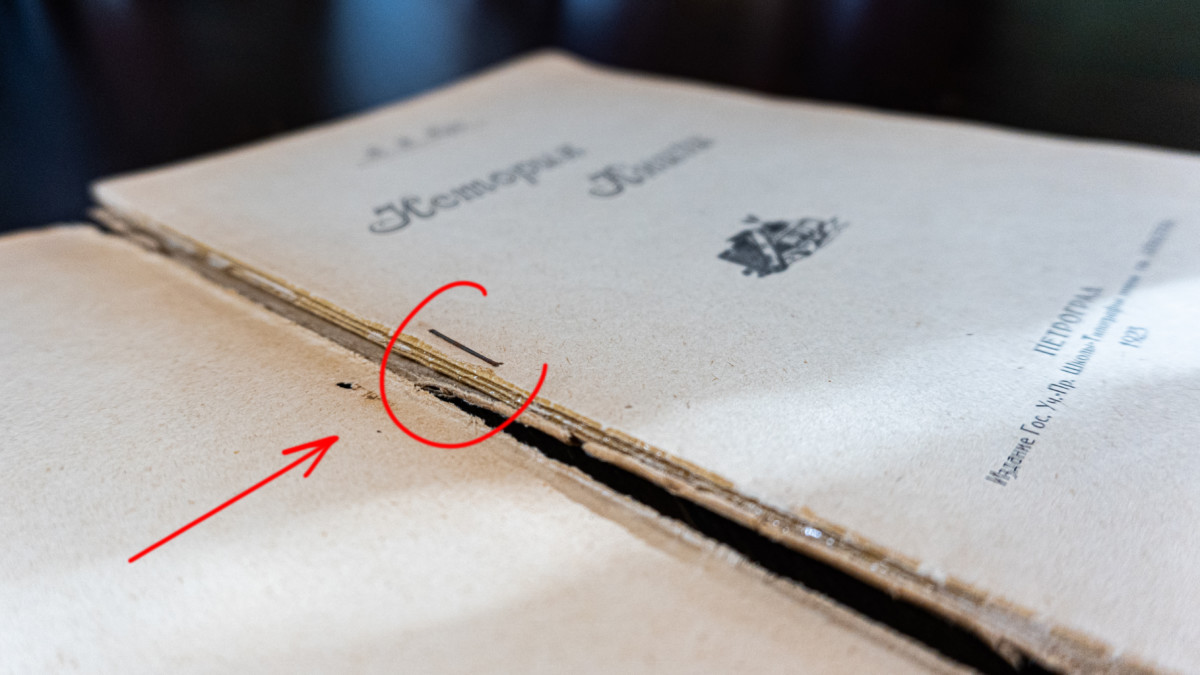Surprising Mixed Three-Section Stabbed Binding From Early Communist Russia
There was something that attracted my attention in this book besides the subject. So, let me tell you about my recent find: this pamphlet about the history of the book written by a Russian literary scientist and bibliognost Vladimir Bush.
It’s an uncut 48-page book printed in three sections with a soft cover. The design is quite simple and lovely; it doesn’t seem very typical for the early 1920s in Soviet Russia. But then, it doesn’t look like something exceptional.
What surprised me was the way they kept the sections together. Instead of stitching them with a thread or, as it was quite popular with mass-produced technical books of that era, stapling them to a mull, they made a sort of a mixed stabbed binding.
All three sections were stapled through with only one staple. Then the spine was glued and the soft cover attached.
That’s it.
Voilà!
You can see that a book stapled that way may be cheaper in production, but isn’t very practical, as the constant use will soon damage the paper. Especially as it is a collection of lectures.
And I can’t say I remember seeing anything close enough to that method of binding. What’s your experience?
The other question that I face at the moment is what to do with the book. I want to scan it, but I don’t want to cut it. However, as the layer of glue has almost entirely degraded, I can easily take the staple away and get three printer’s sheet that could be easily digitized on a large-format scanner.
Among other design elements were two decorative panels placed before the introduction and the main text and a single decorated initial П that was used twice.
Updated with a response:
Please Support us on Patreon!

Moreover, starting with the pledge level of $3, you will get a digitized vintage book about bookbinding, book history, or book arts each month from us!
These pledges help iBookBinding to continue its work and bring more information about bookbinding and book arts to you!










